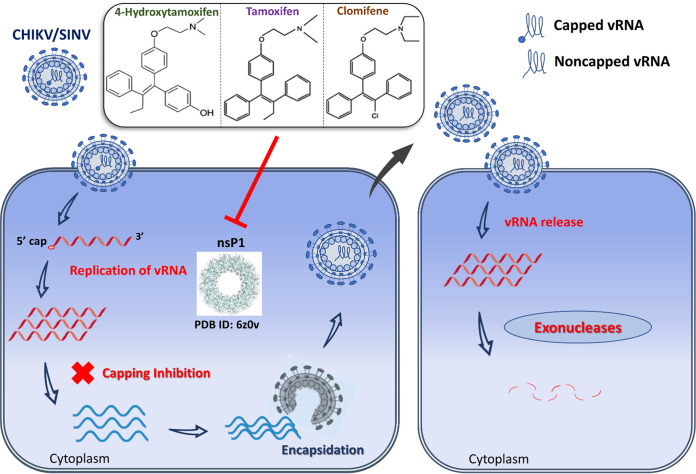FIG 6.
Possible mechanism of antialphaviral action of the SERM compounds mediated via nsP1 inhibition. vRNA is released in the cytoplasm upon entry of SINV/CHIKV in the infected cell. Subsequent translation of viral replication proteins generates a viral RNA synthetic complex that in turn synthesizes numerous copies of vRNA. nsP1 (PDB ID: 6Z0V) plays a critical role in 5′ capping of the progeny genome. Putative inhibition of nsP1 by SERM compounds, viz. 4-OHT, tamoxifen, and clomifene, produces a significant amount of noncapped nascent vRNAs that are encapsidated and subsequently released as mature virus particles. Upon entry into the host cell cytoplasm, these noncapped vRNAs undergo degradation by host RNA decay machinery following nucleocapsid disassembly and vRNA release.

